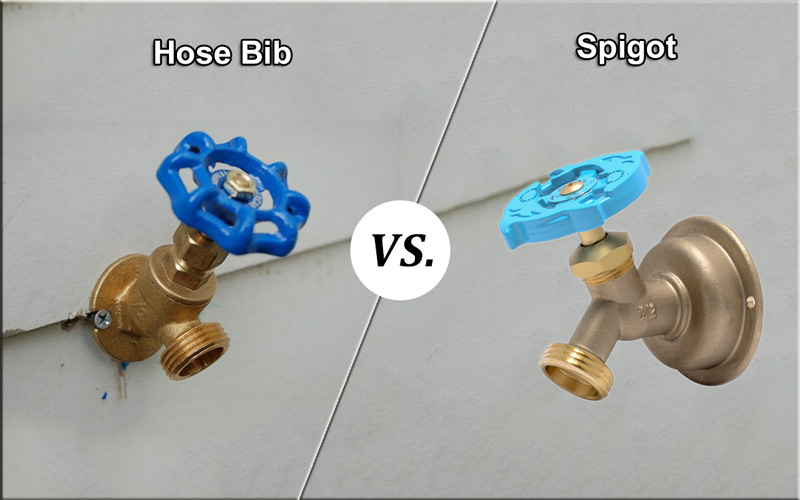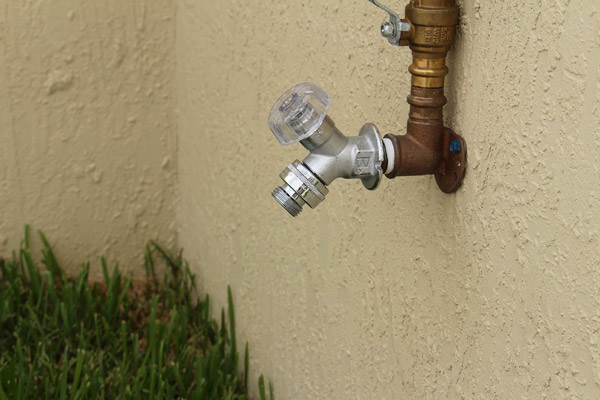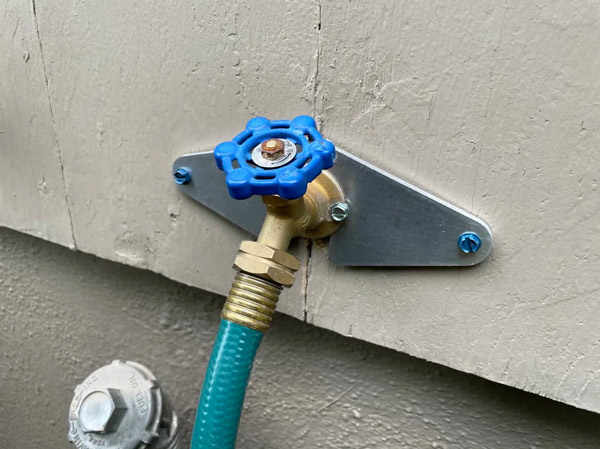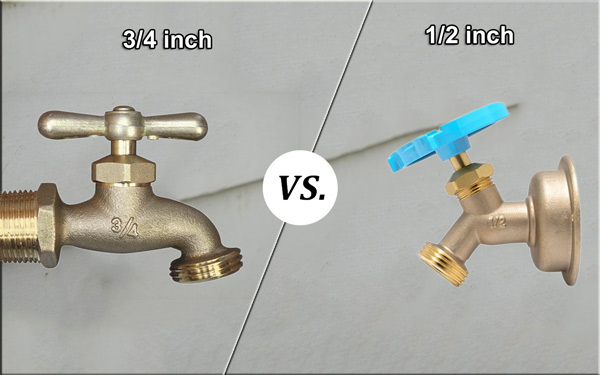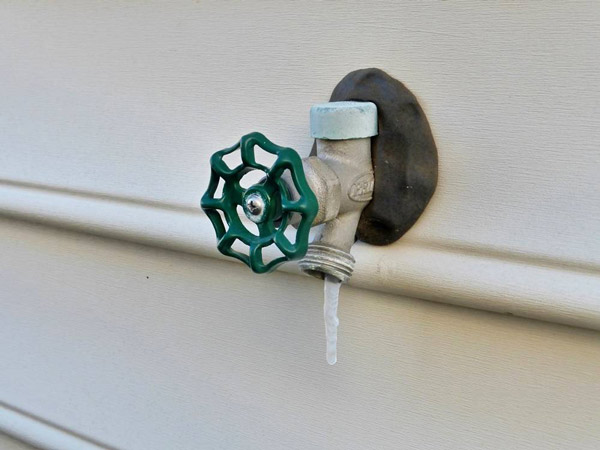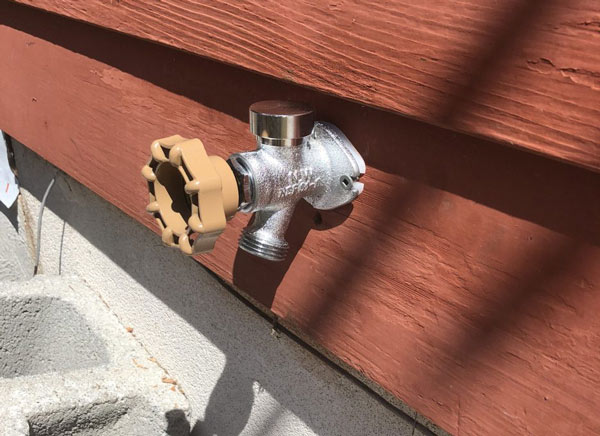There are many different names and types of outdoor faucets, but they all serve the same purpose. Bring the water from the mains faucet outside using a piped water line. Hose bib and spigot are faucets that we usually use in our home, specifically in our yard. But do they have a difference? Let us find out. First, let us know what a hose bib and spigot are.
Is the Spigot and Hose Bib the Same Thing?
A hose bib, often called an outdoor faucet, is a valve used to connect a garden hose. It’s the tap in your backyard that you’ll see. It features fittings on the spout so that you can attach a washing machine hose or a gardening hose to it.
When municipal water restrictions are widespread during the winter months, they use the hose bib on buckets in suburban gardens to supply new, clean, and free drinking water. To get the water to the park, you’ll need to hook up a hose to the barrel.
A spigot is the same as a hose bib, but it is typically used by plumbers or those experts when discussing outdoor faucets.
What Is the Major Difference between a Hose Bib and a Spigot?
A hose bib is a tiny faucet connection on your home’s outside wall that allows you to access water in your lawn, street, and other areas. As the name suggests, this is a little tap that attaches to your hose pipe and allows you to obtain water outside quickly.
Hose bibs go by several terms based on who you ask – an outdoor water faucet, a spigot – and yet they all pertain to the same water device affixed outside of your property.
Hose Bib vs. Spigot: Names/Aliases
There’s one in about every home, although it goes by a variety of names. The same object might be called a sillcock, outside faucet, spigot, or hose bib. To get water in your garden, driveway, and other areas, a hose bib is the little valve connection that is attached to the outside of your house.
Hose Bib vs. Spigot: What Are They Used For?
Hose bibs are often mandated by your plumber code, and when placed in colder climates, they are susceptible to chilling. They are intended to keep the faucet from chilling by placing it inside the warm area of the house. A tiny valve connects to the hose pipe for convenient watering of plants and shrubs outside the home.
Hose Bib vs. Spigot: Use Environment
Hose bibs are usually located on the front or back side of a house, such as a yard or a garage. It is called an exterior valve, and it is frequently built for the ease of the household and to ease the utility of water from outside the residence.
Hose Bib vs. Spigot: What Is the Standard Size?
The most frequent sizes are 1/2 inches and 3/4 inches. This size of the hose bib only pertains to the wall of the pipe.
When choosing the hose bib ideal for you, everything boils down to how much water you need flowing out of the spigot. The greater the water pressure, the tinier the pipes. It is purely a question of personal choice.
Do not worry if you’ve already put on your hose bib. It’s the incorrect size for your pipe or other equipment. Rather than restarting over, you may always buy a size adaptor.
Hose Bib vs. Spigot: Do They Freeze?
Emptying the spigot and shutting off the nozzle that provides water to the bib are the proper ways to protect hose bibs for wintertime.
Indoors, you’ll often find this valve. Let the external valve on the hose bib open if it has one since this will give any frozen water lingering in the pipelines more room to expand.
Switch on the spigot if chilly weather is on the way. Maintaining a moderate flow from the faucet will prevent the water from chilling.
Hose Bib vs. Spigot: Code Requirements
The International Residential Code (IRC-R306.5) is used to stipulate that a home must have a minimum of 2 spigots: the first one on the inside or terrace and the other one on the back. As it was initially published in the 2006 version, no limitation has been established.
Hose Bib vs. Spigot: How Much Does It Cost to Install a Hose Bib or Spigot?
The typical cost of building an outdoor spigot in the United States is $150 to $500. The average household pays roughly $200 for a new bronze hose bib spigot assembly with a designated shut-off valve.
A basic spigot adjustment might cost as little as $100. Installing an outdoor shower might cost up to $1,000 on the high end. These prices don’t even include the expense of regulations, if any is necessary for your location.
Hose Bib vs. Spigot: Where Should They Be Placed?
Each property must have two outside hose bibs or sillcocks, one on the front surface and one on the back wall, each with an available stop screw or valves. To guarantee that the water flows out, the spout of your hose bib must be set at a lesser rate than the water access.
Hose Bib vs. Spigot: Quick Comparison Table
Item: (based on 3/4” thread size) | Hose Bib | Hose Spigot |
|---|---|---|
Name/Aliases | Hydrant, sillcock, outdoor faucet | Tap, faucet, hose bib |
Used For | transport water from your interior systems to the outdoors | allows for the usage of water outside the residence |
Use Environment | Garage, backyard, etc. | Garage, backyard, etc. |
Do They Freeze? | Yes | Yes |
Code Requirements | The International Residential Code (IRC-R306.5) stipulates that a home must have a minimum of 2 spigots: the first one on the inside or terrace and the other one on the back. As it was initially published in the 2006 version, no limitation has been established. | The International Residential Code (IRC-R306.5) stipulates that a home must have a minimum of 2 spigots: the first one on the inside or terrace and the other one on the back. As it was initially published in the 2006 version, no limitation has been established. |
The Final Verdict
Before you choose the ideal faucet for your household, it’s essential to consider the quality, endurance, and lifespan of the backyard faucet. Many people become perplexed when it comes to purchasing energy-efficient faucets. However, if you understand the purpose, picking the appropriate faucet becomes more convenient.
related Articles:

